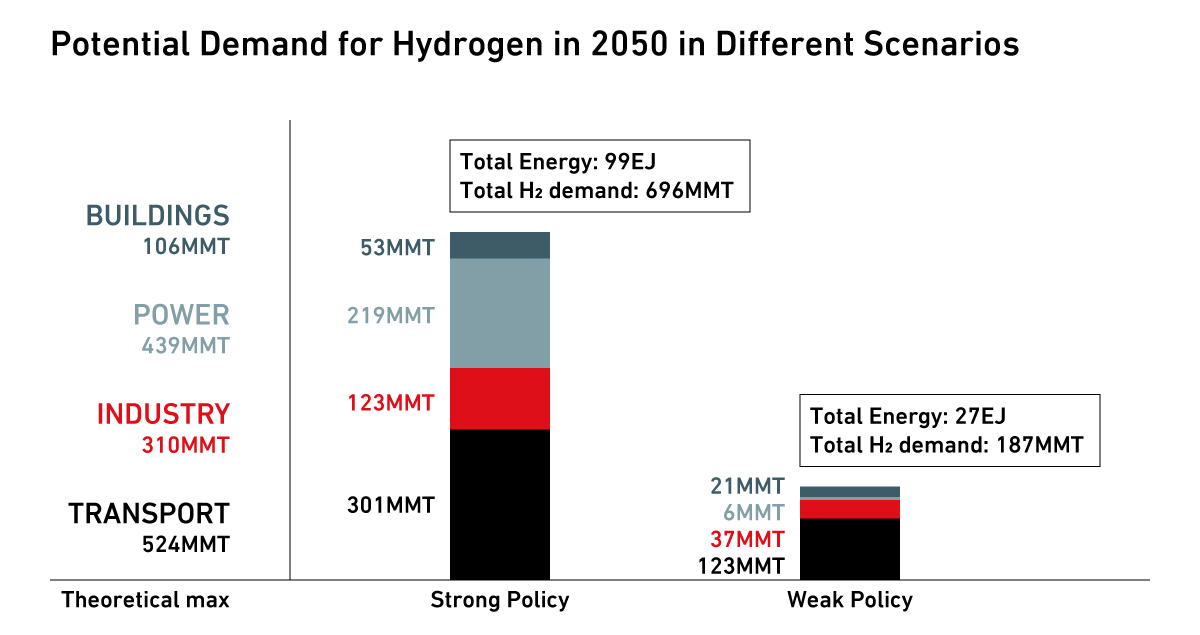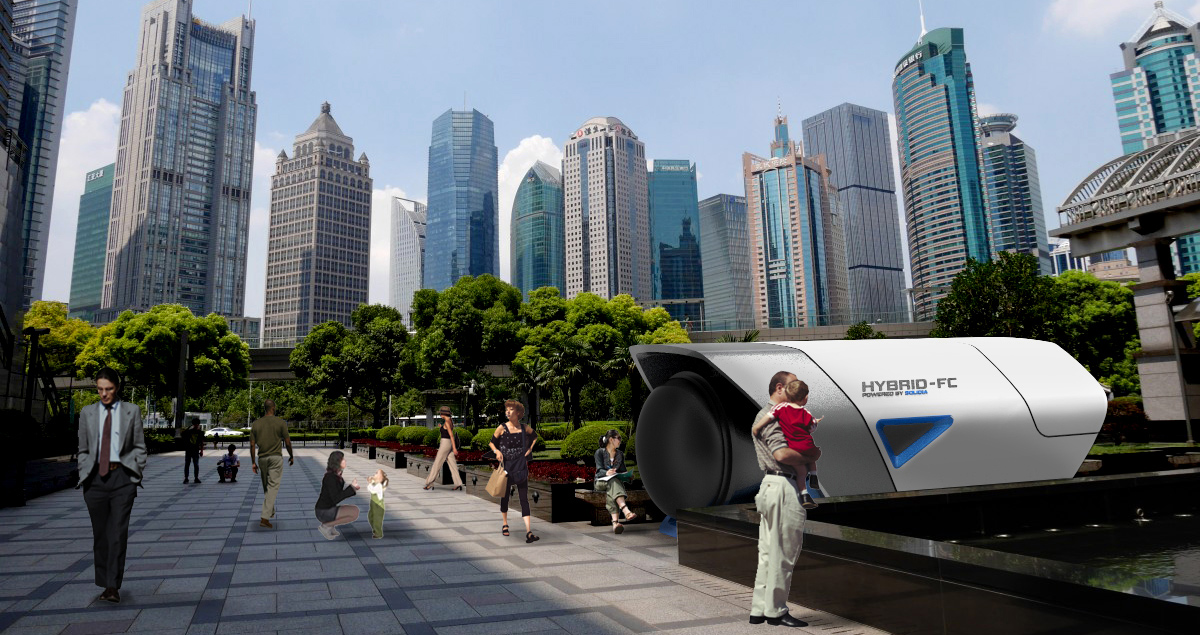Three technologies to power Europe’s hydrogen ambitions

As the European Union (EU) strives to achieve carbon neutrality by 2050, hydrogen will play a crucial role in cutting emissions across all sectors.
Central to that ambition is the European Commission's (EC) hydrogen roadmap. Adopted in July 2020 as part of the Green Deal strategy, it outlines a plan to boost Europe's hydrogen production capacity six-fold by 2024, increasing availability and driving down costs. Now, governments across the region are preparing to spend billions to ramp up the use of hydrogen, while companies across the energy sector prepare to produce and distribute it.
The roadmap is a huge step in the EU's journey to carbon neutrality. Hydrogen offers a solution to lower emissions not only in centralized power generation but also in many hard-to-abate sectors such as steel-making, chemicals manufacturing and heavy-duty transport. While the potential is vast, the change won't happen overnight.
Decarbonization has to be affordable for it to be sustainable
Thomas Bohner
Thomas Bohner
Achieving net zero emissions by 2050 requires dramatic actions and investments over the next decade, according to the World Energy Outlook 2020 report published by the International Energy Agency in October. That includes innovation across a broad range of intermediary technologies that increase efficiency, reduce CO2 emissions and realize the potential of hydrogen.
"What the energy industry had started with its shift to renewables, is now firmly at the doorstep of other key sectors," Thomas Bohner, CEO of Mitsubishi Power Europe (formerly Mitsubishi Hitachi Power Systems) in Germany, said during his keynote speech at the BNEF Summit London. "Achieving net-zero is widely acknowledged not to be possible without decarbonizing heavy industry such as steel and cement as well as transport and heating buildings -- all those areas of the economy where electrification can only go so far."
"Decarbonization has to be affordable for it to be sustainable," and these three intermediary technologies are central to Europe's ambitions for a hydrogen-powered future.

Cleaner Power
Combined Cycle Gas Turbines (CCGT) recover exhaust heat from gas-powered turbines and use it to generate steam that powers steam turbines. The result is the cleanest and highest efficiency power generation using fossil fuels.
Nearly all of the parts in such turbines can run on hydrogen as well. So, only parts of these CCGTs need to be retrofitted to be able to use 100% hydrogen as a fuel in the future. Hydrogen-ready CCGTs will play an important role in Europe's drive to carbon neutrality, while making sure the lights remain on as we reach for that future hydrogen society. Given their versatility, power plants that use gas or a mix of gas and hydrogen to power CCGTs today, can power them with hydrogen alone in the future. That enables them to avoid stranded assets and evolve in step with the energy transition, futureproofing their operations.
Cleaner Cities
Solid oxide fuel cells (SOFC) offer another avenue to low-carbon or no-carbon power and heat generation, particularly for buildings, which account for around 40% of energy consumption and 36% of emissions in the EU. Incorporating a micro gas turbine into the system, hybrid SOFCs can be incredibly versatile and work with a wide range of fuels including natural gas, hydrogen, biogas and propane. Using electrochemical converters, for instance, they can combine hydrogen and oxygen to produce energy without emitting CO2.
"You can use solid oxide fuel cells for all the fuel mixes including biogas, natural gas and hydrogen, so you have full flexibility," Mr. Bohner said. "And you have almost no emissions and generate higher efficiency and less degradation over the years compared to a gas engine of the same size. We are excited to deliver our first hybrid SOFC unit MEGAMIE in Europe."

Both safe and compact, SOFCs can be used not only in factories but also metropolises, and promise to play an integral role in moving Europe closer to a zero-emissions future. Europe's first SOFC goes to a research institute in Essen, Germany. Here, MEGAMIE's gas turbine operation flexibility and the proportional use of hydrogen as a fuel gas will be further tested for generating clean power and heat as it does now for Marunouchi Building in the heart of Tokyo's financial district and the HAZAMA ANDO Technical Research Institute in Tsukuba.
Cleaner Industries
Power-to-X is yet another versatile solution that holds great promise for Europe's energy mix. Essentially, power-to-X allows for the storage and conversion of surplus electricity on a larger scale compared with traditional battery systems. As RWE Power's pilot MefCO2 Project in Germany sets out to demonstrate, this can help to mitigate intermittency where renewables like wind and solar power generate too little or too much energy, making them more reliable during peak hours and reducing our dependency on fossil fuels.
On the industry front, power-to-X can help with expanding the benefits of using hydrogen to decarbonize the sector. Surplus energy can be converted into hydrogen using an electrolyzer. That hydrogen can be further converted into ammonia or methanol, which are primary manufacturing feedstocks, while methanol can also be used directly as fuel or further refined into a diesel substitute for generators or shipping, producing drastically lower nitrogen oxide and soot emissions. The MefCO2 Project, for example, produces a ton of methanol every day from 1.5 tons of CO2.
By replacing carbon-intensive feedstocks such as natural gas and coal, hydrogen can reduce industry emissions. Here, power-to-X complements the EC's hydrogen roadmap, which calls for EU industry to build and install bigger electrolyzers near large refineries, steel plants and chemical complexes.
"Right now, the question is where does the market go?" Mr. Bohner says. "Mitsubishi Heavy Industries Group emphasizes the need for an economical, sustainable solution - the pragmatic solution. And how quick can this industry ramp up? Once this is decided, then I would say everybody who is in this industry is eager to participate."
The first big test in Europe's drive to a carbon-neutral 2050 will come just ten years from now. As part of the Green Deal, countries across the EU must reduce gas emissions by at least 55% compared to 1990. Mitsubishi Power's hydrogen-capable CCGTs, fuel cells and power-to-X technologies will play a big role in making that happen.
Case Studies Technologies in the Energy Transition





